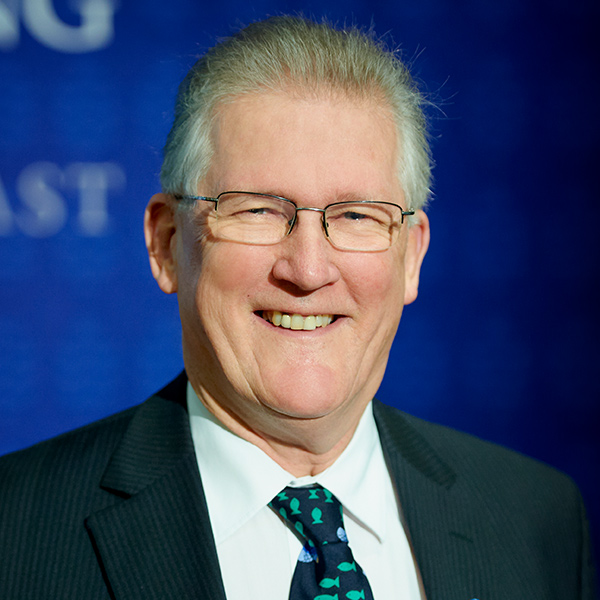
The Pro IQ Interview Series: Natural Disaster Management and Recovery
John Glaister has public and private sector experience in natural resource management, economic development, stakeholder management, public…
John Glaister has public and private sector experience in natural resource management, economic development, stakeholder management, public policy, regulatory legislation and implementation, strategic planning, risk management and governance, regulatory and organisational change. Resourceful Pro caught up with John to discuss how government approaches natural disaster management and recovery.
RP: Your career has spanned government, both here in Australia and in New Zealand, academia, the private sector, Board roles and consulting. Can you provide a bit of background about yourself please.
JG: My early career was in applied science (marine biology) and then evolved into leadership roles, firstly in science and then in management and senior management. Research and discovery that leads to better custodianship of natural resources is personally both rewarding and stimulating. Leading research teams and directing applied research effort is a step up and develops skills in people management, budgeting, planning, strategy and politics.
I was also fortunate to work in a senior role in New Zealand and experienced a market-based natural resource management regime that Australia has now adopted, that of quotas. Designed properly it definitely leads to better sustainability and economic outcomes.
I have also worked in a University’s commercialisation arm, seeking out novel intellectual property and introducing potential commercial partners to the inventors – again, developing skills interacting with gifted individuals and commercial reality.
I worked in first tier engineering and construction firm as a science advisor, providing input to environmental issues but also advising senior management more broadly on future challenges.
In recent times, I am chairing several technical Boards for the Commonwealth, as well as a couple of not-for-profit local entities.
RP: Australia faces challenges from a wide array of natural disasters, and your career has touched on several areas that relate to disaster management and recovery. What is unique about Australia’s experience in this area?
JG: Senior state government roles in transport, health planning and national parks certainly gave me a front row seat in dealing with natural disaster management and recovery. Australia is probably unique in being such a large land mass spanning tropical to temperate climate zones and having a sparse but concentrated population.
When you think of cyclones, fires and floods there is not much Australia has not experienced in recent history, and likely to continue to experience. When natural events like these occur, it is very much about the speedy initial response – where the event occurs, dimensions of impacts, human safety and immediate mitigation. So things like emergency shelter, medical services, food, and restoring services (power, water, access). Once the event has passed or is controlled, the efforts then are focused on recovery.
As a consequence of their frequency, Queensland is now well practiced in dealing with natural disasters and has established mechanisms that come into play, centered on the emergency management facility at Kedron.
RP: From a layperson’s perspective it can sometimes be difficult to discern who does what. Can you talk me through who the key players are, what they do, and who takes the lead?
JG: My experience has been in Queensland, but I am sure similar mechanisms exist in other jurisdictions. Usually, a senior person with logistics experience is appointed as Incident Controller and their role is to be a central point-of-truth. An early decision point is the extent of the impact. Is it contained and better managed by a local group? Has it impacted a large area and needs central, state-wide control or is it massive and requires national logistics resources to adequately manage?
If it is a state disaster, the Premier will convene a Cabinet group of appropriate Ministers as well as interact with the Emergency Management group at Kedron (this latter group includes senior representatives from all significant Departments).
Depending on the nature of the disaster, the initial response will occur over several days to weeks as services are restored and safety of inhabitants ensured. Then comes recovery, which again, depends on the nature of the disaster.
RP: When communities in Australia are recovering from natural disasters, which agencies or bodies lead the efforts and what does strong and effective recovery look like?
JG: Again, the scale of the disaster is the determining factor as to whether it is handled at the local (Council), state or federal government level. At the state level, agencies like Treasury, Health, Police, Emergency Management, Transport, Communities, Public Works, Agriculture, National Parks, Reconstruction Authority, Energy and Water, and Education are all significant. Often the federal government will provide logistical support through the Armed Services.
Effective recovery always has a sound and effective communications strategy, accessible spokespeople, sympathetic personnel, volunteer groups like Red Cross, Vinnies and CWA, as well as slashing red tape.
RP: Do commercial opportunities arise from natural disaster recovery efforts?
JG: Yes they do. But in addition to the obvious needs of reconstruction and rehabilitation (human as well as material), I believe there is an under-appreciated need in futuring, in other words anticipating and planning for future change. It is beyond doubt that our climate is changing and with that, future natural disaster frequency and intensity.
To take one example, sea level rise (SLR). Imagine Collaroy Beach erosion in Sydney applied to the Australian coastline, where the bulk of our population lives. Look at any inundation map of any Australian state to see projections of what is statistically likely in terms of SLR. Think Gold Coast (Queensland); Geelong (Victoria); North Fremantle (Western Australia); Glenelg (South Australia); Darwin (the Northern Territory).
Are Australian companies working with local and state governments to plan what mitigation is feasible/economic? Is it stabilisation or defensive infrastructure, housing design and modification, walled foreshore, and the loss of beach? Examples of SLR in Indonesia and Japan suggest people are unwilling or unable to relocate so sequential mitigation is practiced. What will we do? Then apply the same logic to other natural disasters like floods, cyclones, fires – there is a role for future thinking.
RP: Natural disaster management and recovery in Australia sometimes appears quite complicated. Is it?
JG: Yes and no! Yes, because it is. People’s lives have been turned upside down and they want to reclaim the new normal as fast as they can. Systems are important and getting them right is complicated.
No, because helping in recovery is part of what makes us human. It is a rewarding and worthwhile thing to do.
RP: What is next for you?
JG: As I mentioned earlier, I have worked in a range of discipline areas at a senior level during my career. I have been able to learn new skills and master new portfolio areas and then produce sound policies. I have worked in different countries, for different political regimes and been successful. I think I can offer something different as a consultant or as an interim executive with government and private sector experience, as well as an ability to quickly understand issues and solutions.
Related Blogs
Salary Survey: Ensure your company remains a magnet for top talent
In today’s dynamic business landscape, staying competitive in the job market is essential. It is imperative to ensure that your employees are not only fairly compensated but also that your…
The Pro IQ Interview Series: Critical Minerals Association Australia, Namali Mackay
Our latest feature in the Pro IQ Interview Series is a conversation with one of the Founders and Managing Director of the Critical Minerals Association Australia, Namali Mackay. Here she describes…
Unleashing Potential: The Significance of Assessing Candidates’ Behavioural Competencies
In today’s fiercely competitive job market, executive search consultants face the challenging task of identifying individuals who not only possess the right skills and qualifications but also demonstrate the essential…
Who are your most irreplaceable employees?
Who are your most irreplaceable employees? – the Importance of Organisational Network Analysis In today’s fast-paced business world, retaining key employees is a top priority for organisations. But, while…




